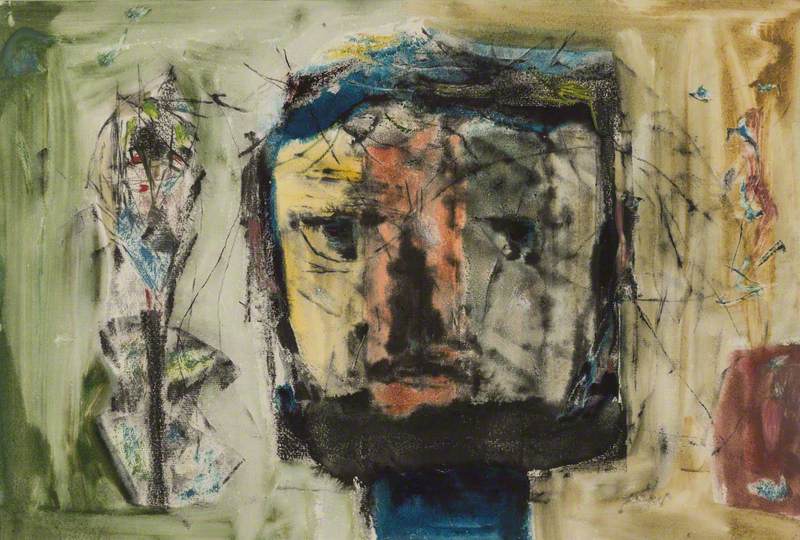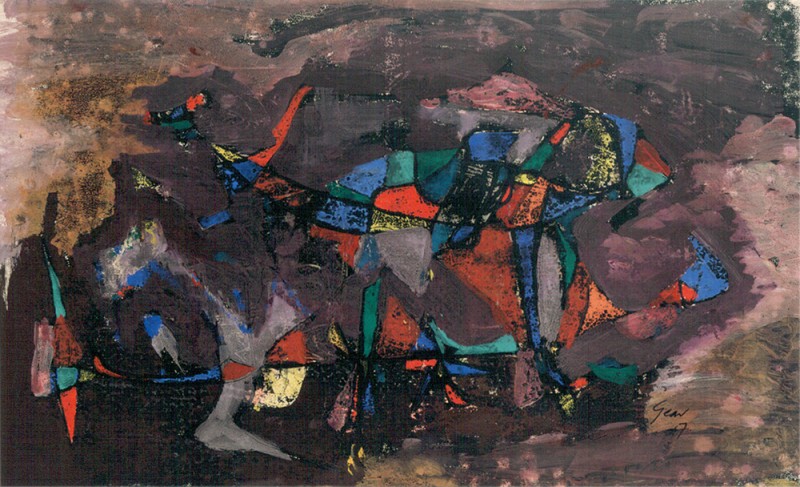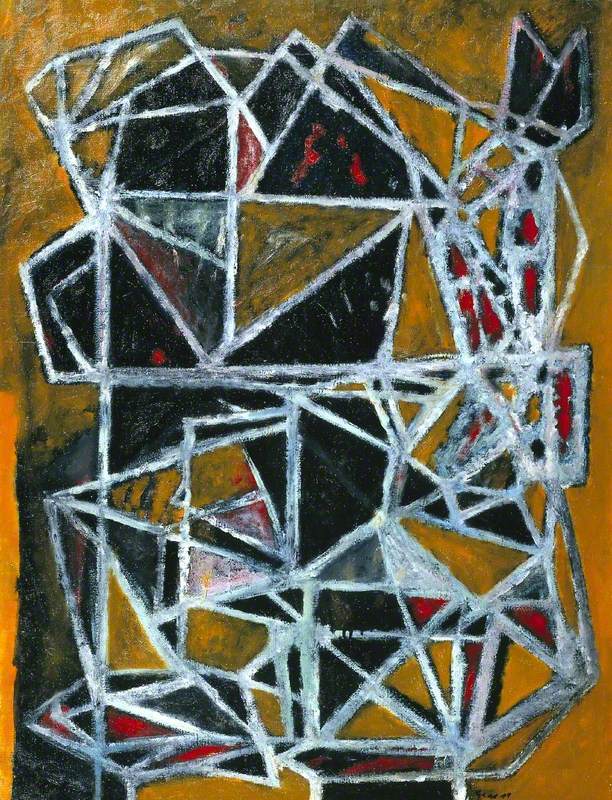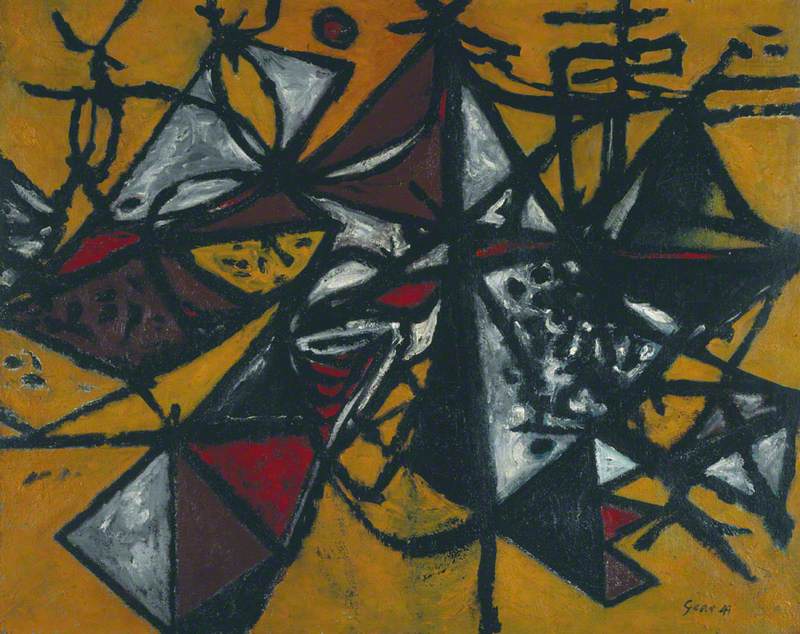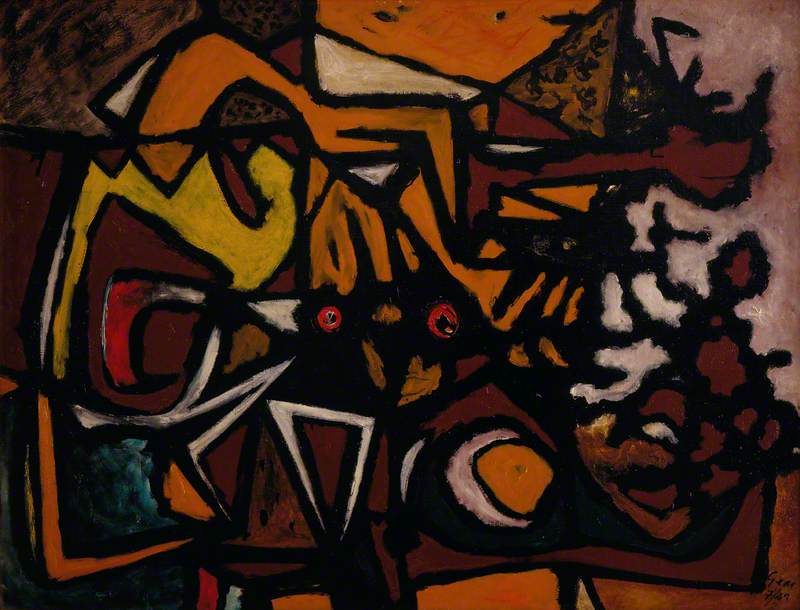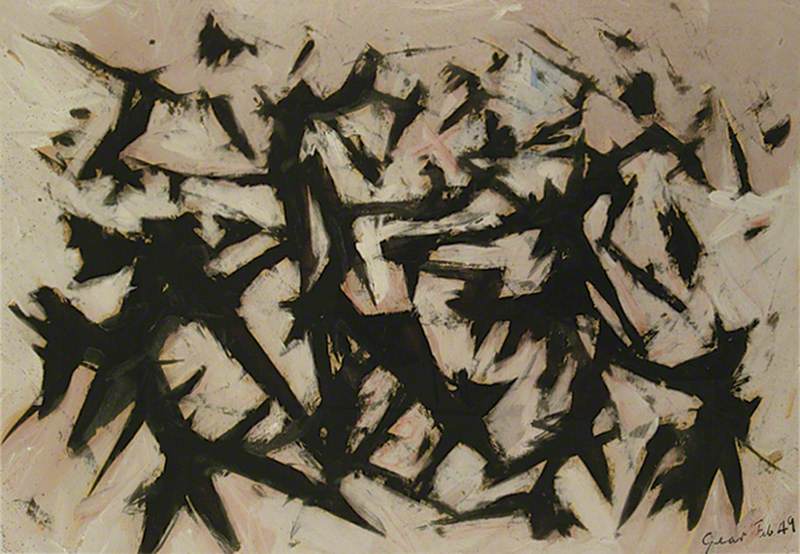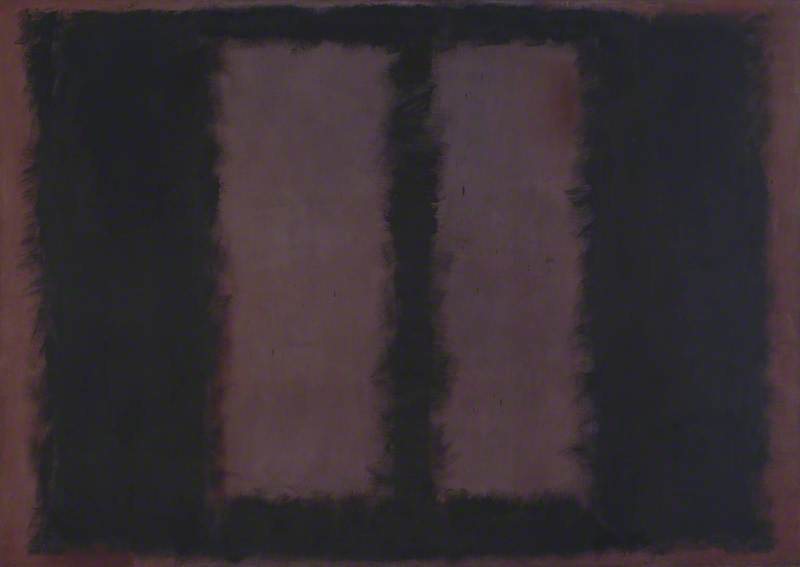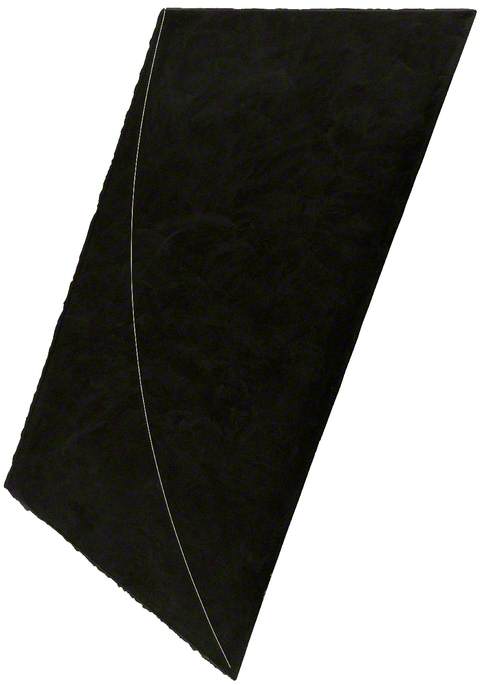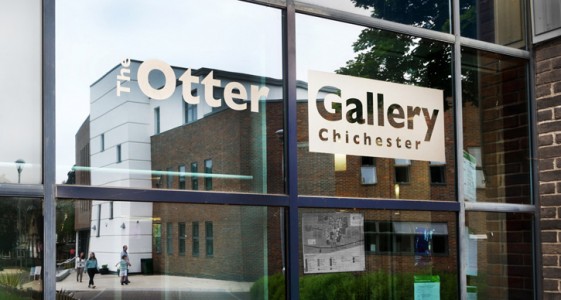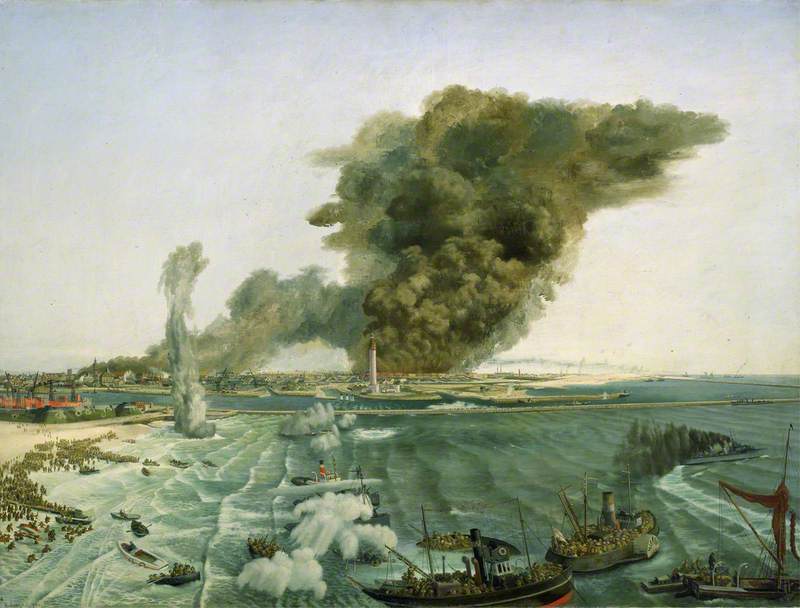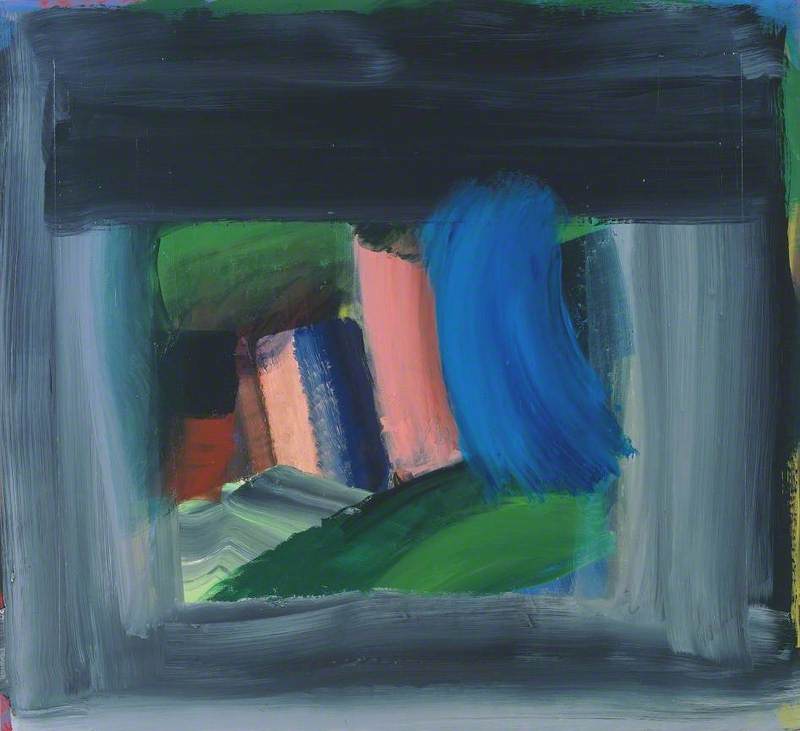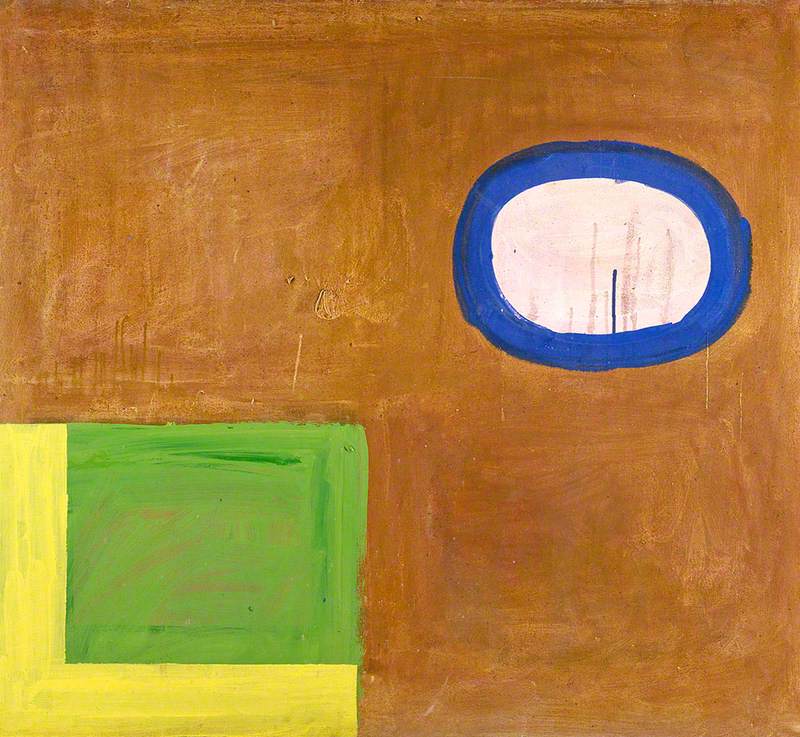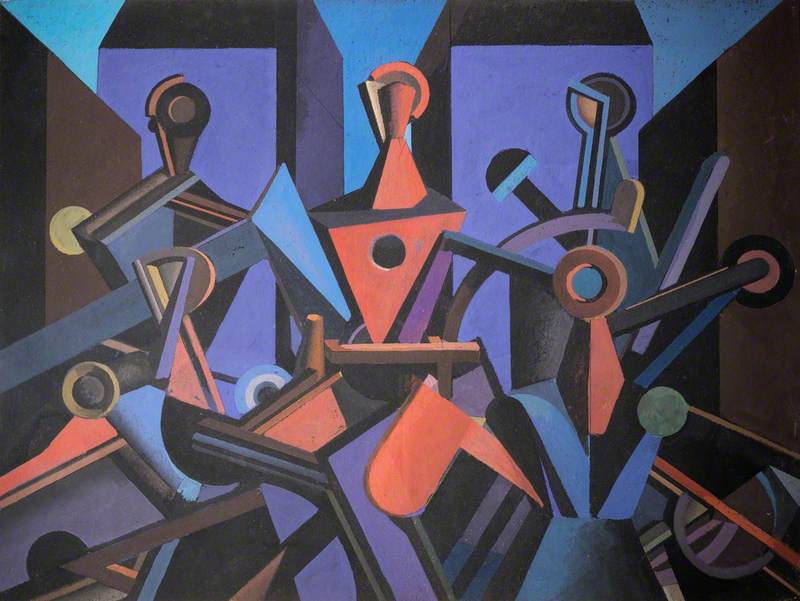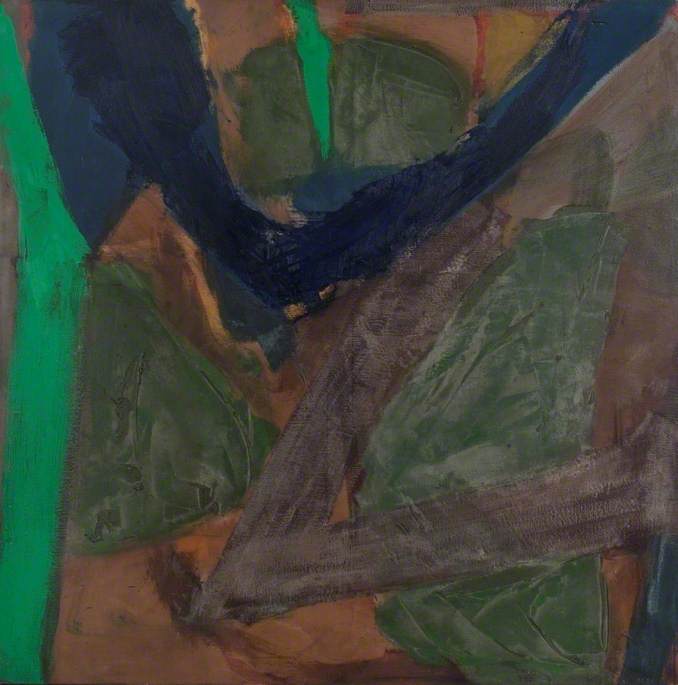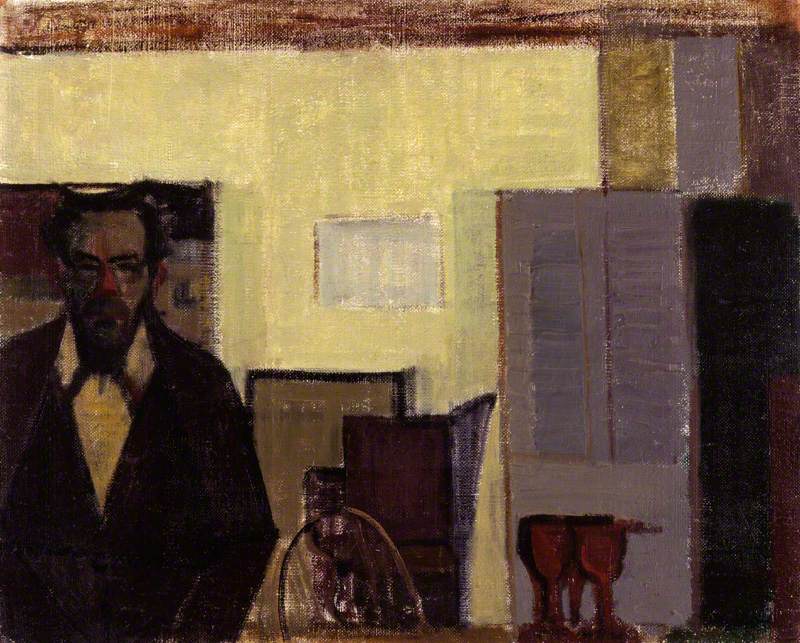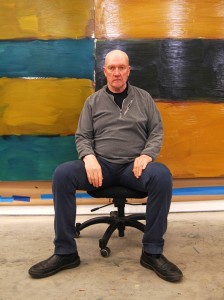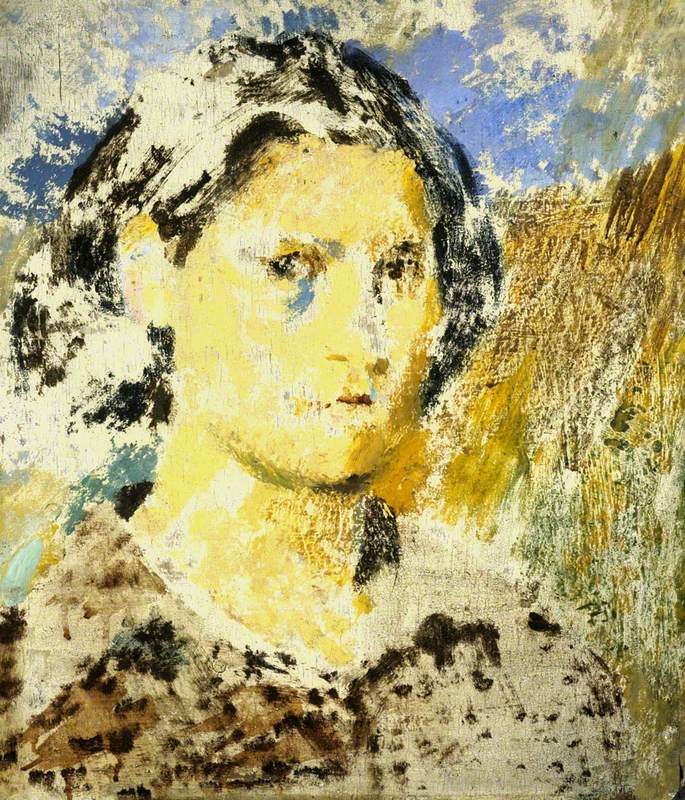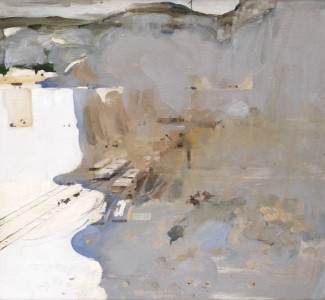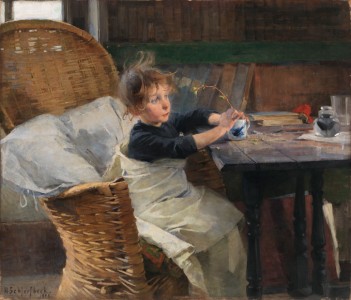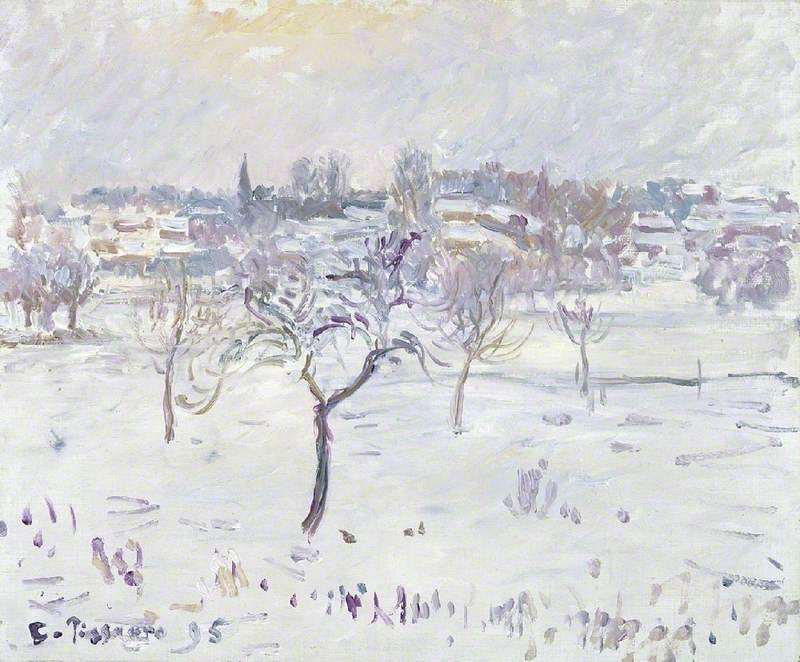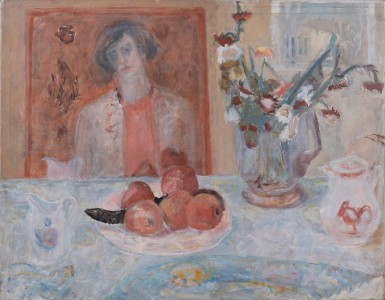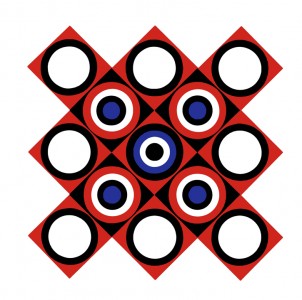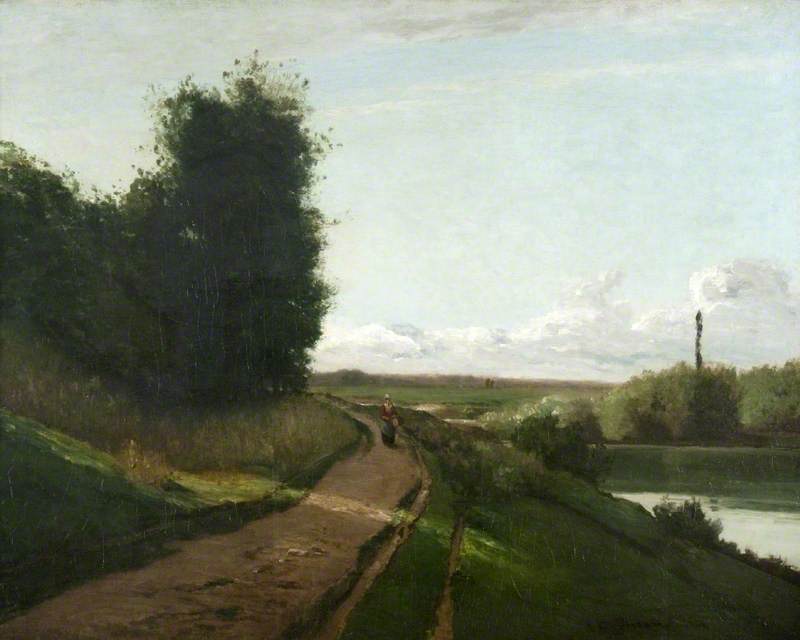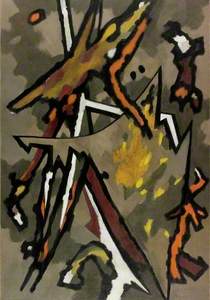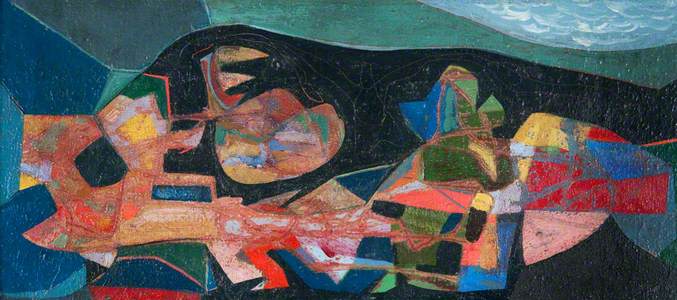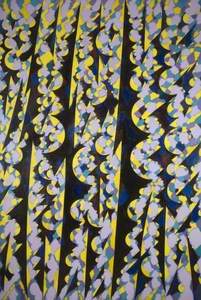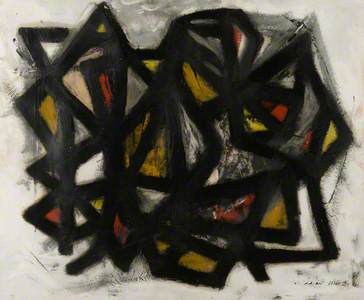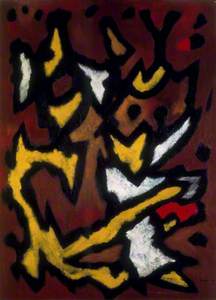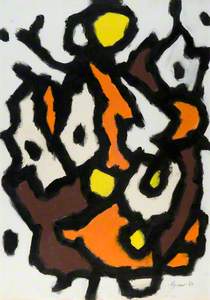I write about art for a living but I also happen to love art (not the same thing), and I collect it when I can afford it. My tastes are quite diverse – I like landscape painting but also 1950s abstraction, and William Gear (1915–1997) falls into both categories.
I also collect artists’ self portraits, and I have one by Gear, from 1949, a large drawing in Indian ink, done when his whole existence was on the brink of change. He had moved to Paris after serving in the army in the Second World War and working as a ‘Monuments Man’ in Germany returning looted art treasures to their rightful owners. He was now an experimental painter at the heart of European Modernism, and his art was radical, abstract and still very much evolving. But he had also just met the love of his life, his future wife Charlotte, and was in an emotional whirl of exhilarated confusion, full of doubt as well as certainty.
His art was about to take off – he hit the big time in 1951 with an abstract painting called Autumn Landscape (in the Laing Art Gallery) painted for the Festival of Britain, and he settled down in England with his new wife. Although Scottish by birth, he lived in England for the rest of his life, enjoying a good measure of fame and success in the 1950s and 1960s, and then falling from favour as American Abstract Expressionism swept the board along with Pop art.
Gear is one of the few truly international figures of Modern British painting, but his considerable achievement has been sadly neglected in an artistic climate that consistently looked more to America than to Europe. His early work, from the Paris period, was taken up by the CoBrA group of wild European Expressionists, and his signature style brings together a strong structure of black outlines with the dappled colour effects of light falling through foliage. Some of his best paintings are tough abstractions, others are sunlit vistas of orchards. He had a considerable range of expression, from the lyrical to the formal and analytical, and he really cared (like all good painters) about the stuff of paint and how it could be manipulated to make it more interesting.
There are over 60 paintings by Gear on the Art UK website, indicating how popular he was at the high point of his career. Amazingly he didn’t become embittered at his fall from fashion, but very much enjoyed his gradual return to exhibiting at the end of his life. I’ve long wanted to write a book about his work, and his centenary in 2015 was the perfect peg on which to hang such a publication. People are now re-discovering Gear and beginning to realise how important a figure he actually was. Check out his pictures – there’s probably one in a museum near you.
Andrew Lambirth
'Face to Face: Portraits from the Andrew Lambirth Collection' was on at Gainsborough’s House, Sudbury, 11th June to 16th October 2016.
Andrew Lambirth, champion of neglected artists, has written a major new monograph on William Gear (1915–1997), one of the few truly international figures of Modern British painting, yet strangely overlooked. Here he examines a critical moment in Gear's life.
